comprex® - The mechanical cleaning with air and water
Discharge of coarse particles from pipes
The comprex® cleaning process is divided into two phases:
- Removal and mobilization of deposits
- Complete discharge of the mobilized particles
When cleaning, the main focus is on removing and mobilizing deposits. However, there are also cases in which the focus is on the delivery. Debris can cause damage, especially at low points in pipelines. Abrasion leads to breakthroughs in the sole area. Chips and similar coarse particles can cause blockages if they are not removed in good time.
The patented comprex® cleaning system
Coarse particles in pipes
Debris can accumulate in low-lying areas of wastewater pressure pipes, for example in culverts, if the flow velocity is insufficient. Worksheet DWA-A 113 provides information on the minimum flow velocity required for vertical and horizontal pipes depending on the pipe diameter. If debris remains in low-lying pipe sections, the movement of the particles when the pumps are switched on and off leads to abrasion and ultimately to damage in the invert area. Wastewater enters the soil.
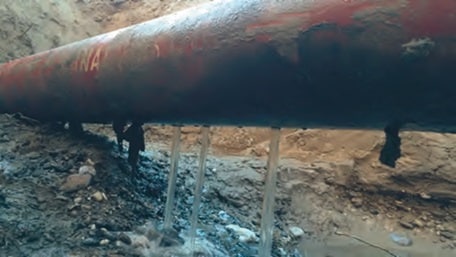

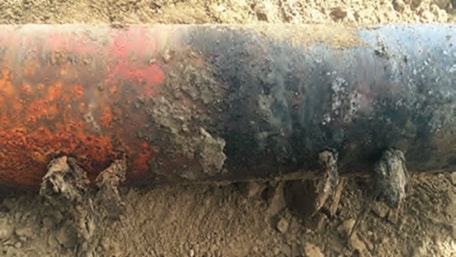
Damage caused by abrasion in the invert area of a wastewater pressure pipe*
Damage caused by abrasion in the invert area of a wastewater pressure pipe*
Wet wipes partially block the openings*
*Prosser, M. (2016): Damage to a wastewater pressure pipe; KA Betriebs-Info (46) October 2016; pp. 2540-2541
Discharge of coarse particles using Comprex® technology
There are also low-lying areas in raw and drinking water pipes. Coarse particles can cause hygiene problems here. Typical coarse particles in drinking water pipes are calottes from house connections that could not be removed with the water flush. However, lime scale can also occur in PE pipes and affect the hydraulics.
Many years of experience have shown that Comprex cleaning not only reliably removes detached deposits, but also reliably removes coarse particles.
Example wastewater pressure pipe
Coarse particles from wastewater pressure pipe after comprex® cleaning:

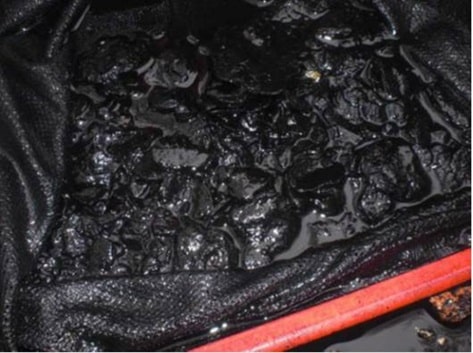
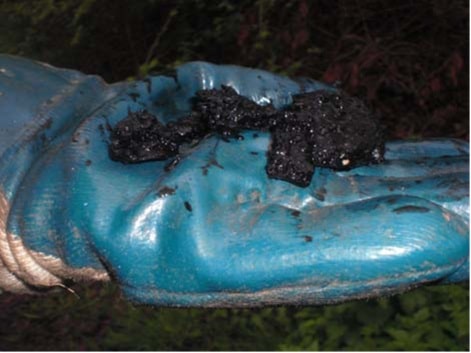
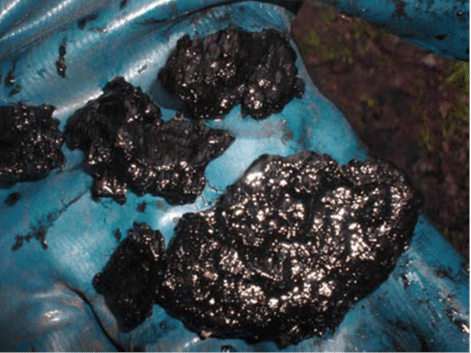
Example raw water pipe
Coarse particles in the bottom area of raw water pipes and discharge in the waterworks:

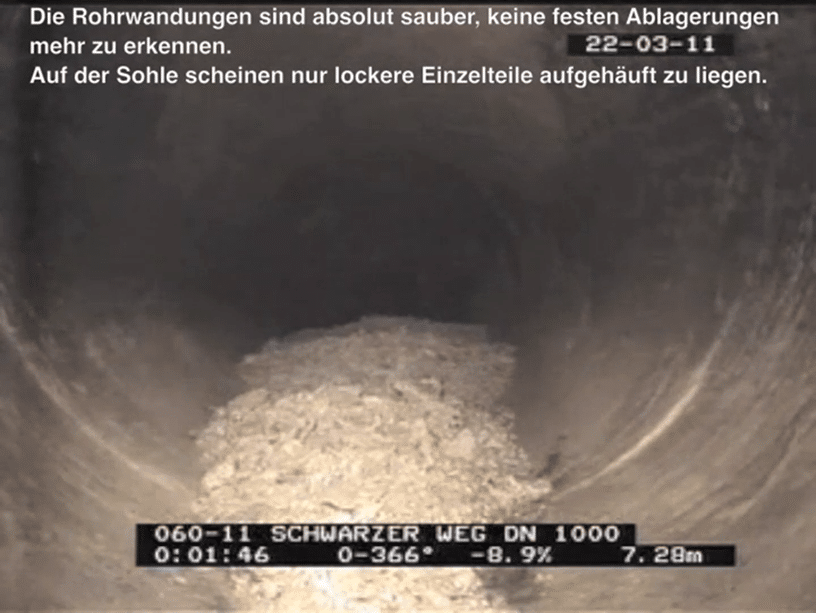

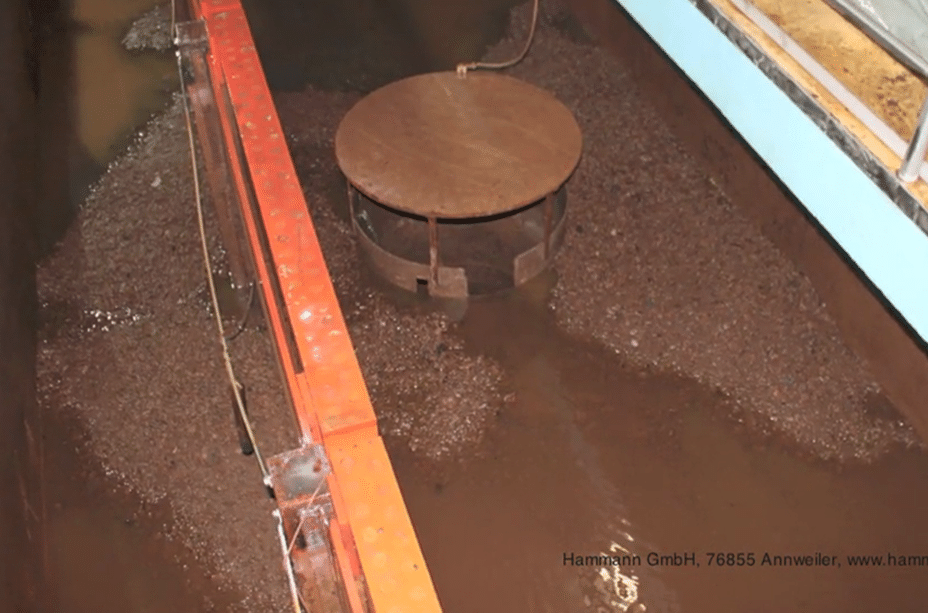
Coarse particles from a culvert in a DN 1000 raw water pipe with a discharge point in the waterworks some 18 m higher up:
Example drinking water pipe
Coarse particles from drinking water pipes: Spherical caps from tapping holes for house connections and limescale shells from PE pipes caused by limescale-removing water, cell phone for size comparison:

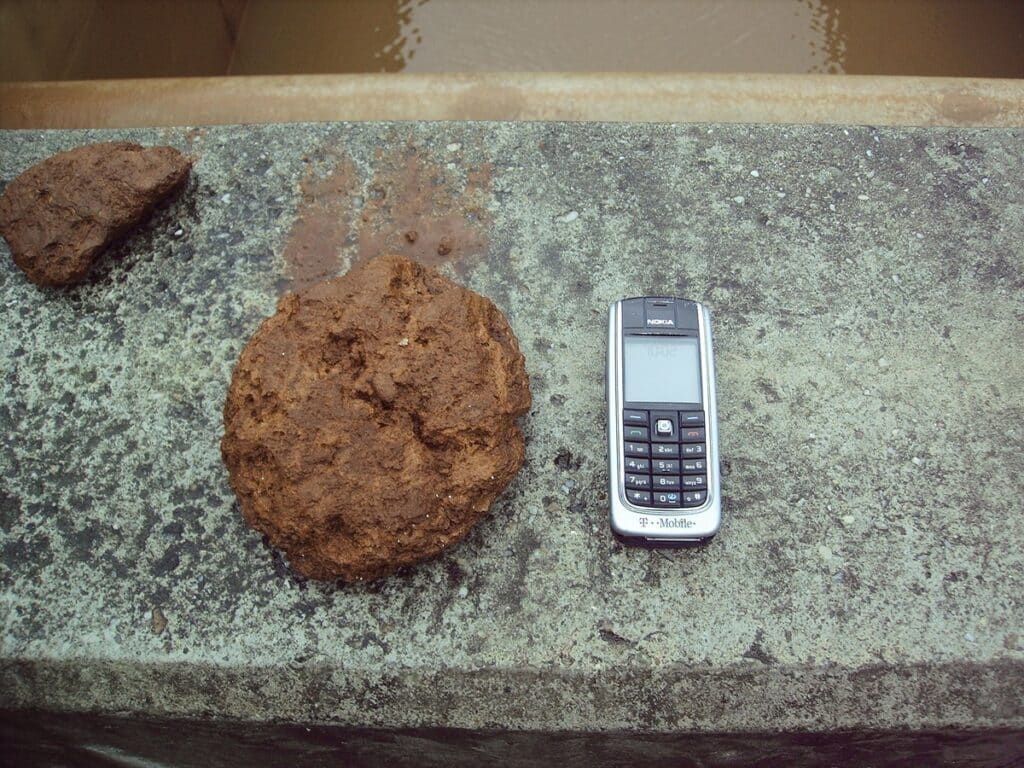
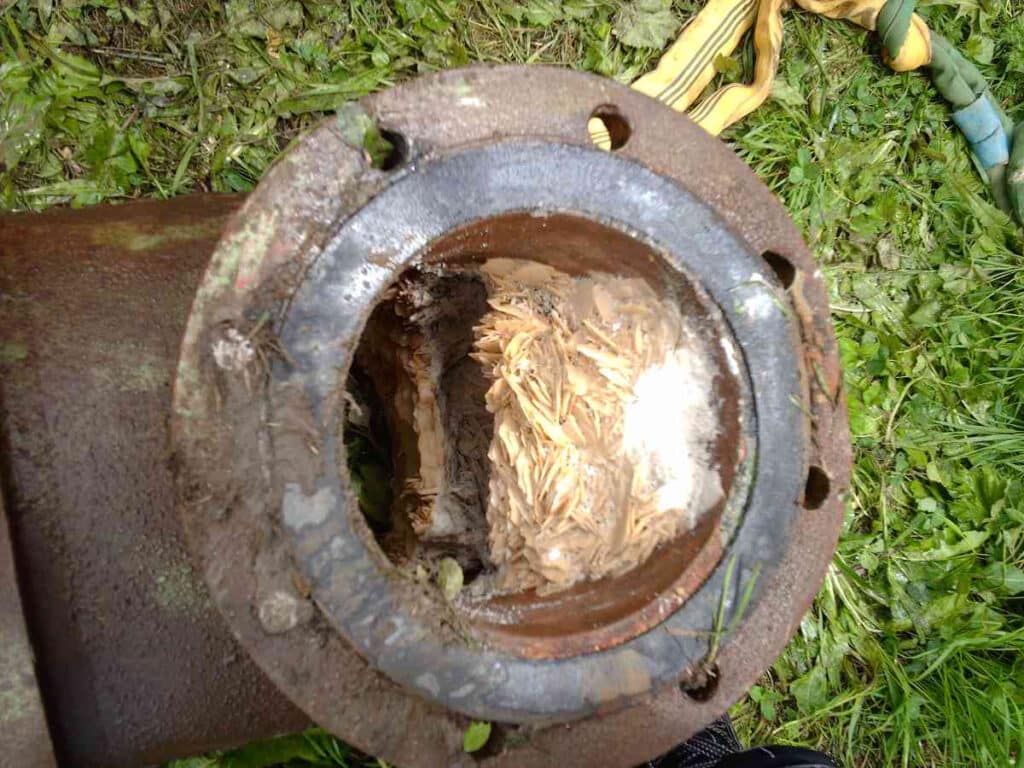
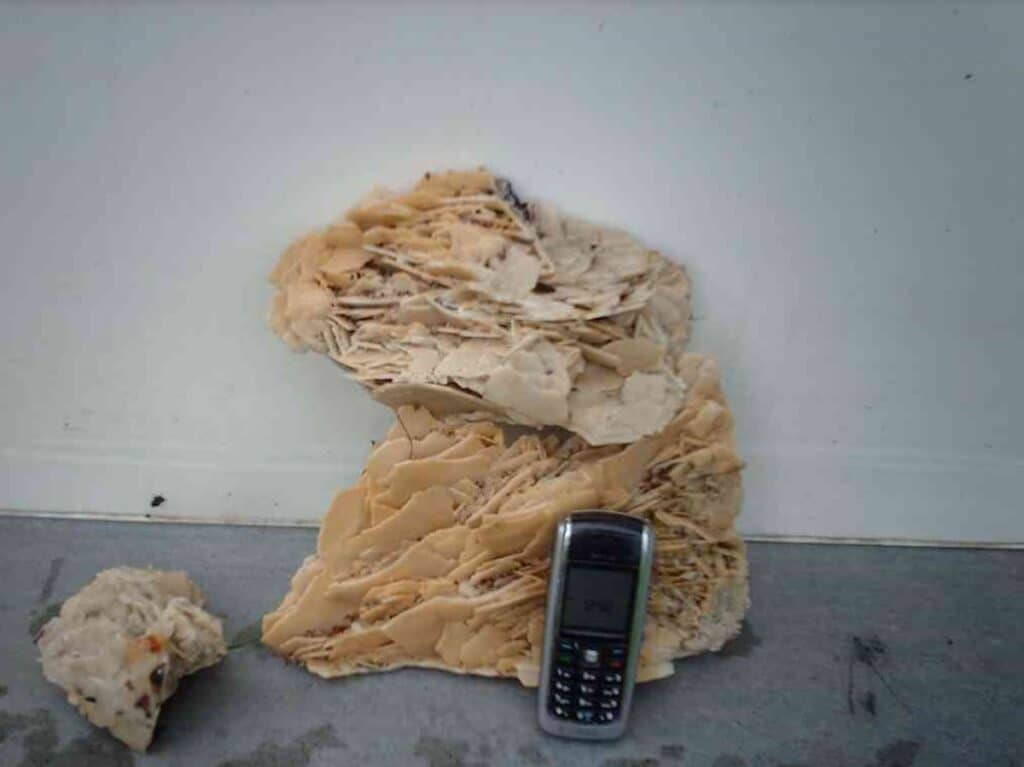
Innovation
Comprex cleaning is always advantageous when other methods are not possible. Comprex technology allows pipe sections of several hundred meters in length as well as long culvert pipes to be cleaned. Even culverts in gravity pipes can be cleaned with the help of flow-through pipe sealing bags.
Culvert in wastewater pressure pipes and in gravity pipes:


While connections for air release valves (BEV) serve as feed points for the Comprex pulses in wastewater pressure pipes, culverts in gravity pipes can be prepared for Comprex technology by installing the flow pipe sealing cushions.
Feeding the comprex® pressure release pulses into the wastewater pressure line:

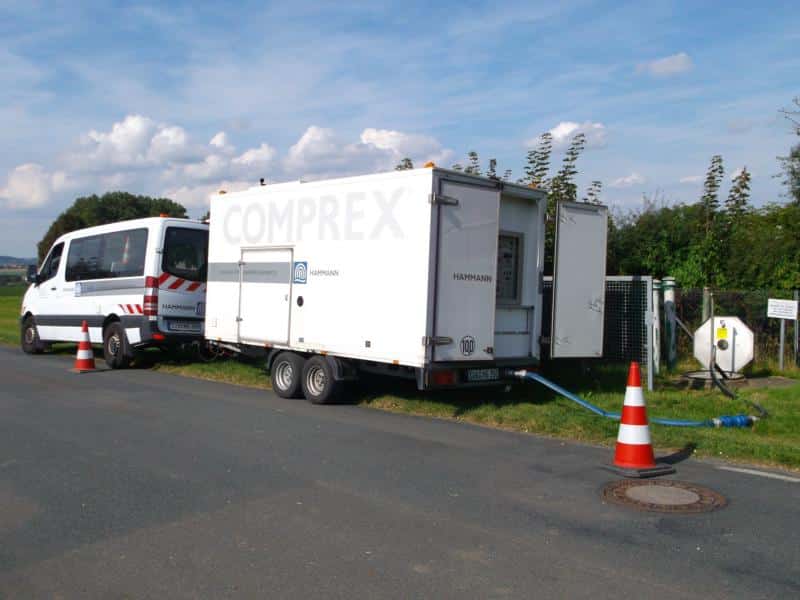
Installation of flow pipe sealing cushions in gravity pipes:
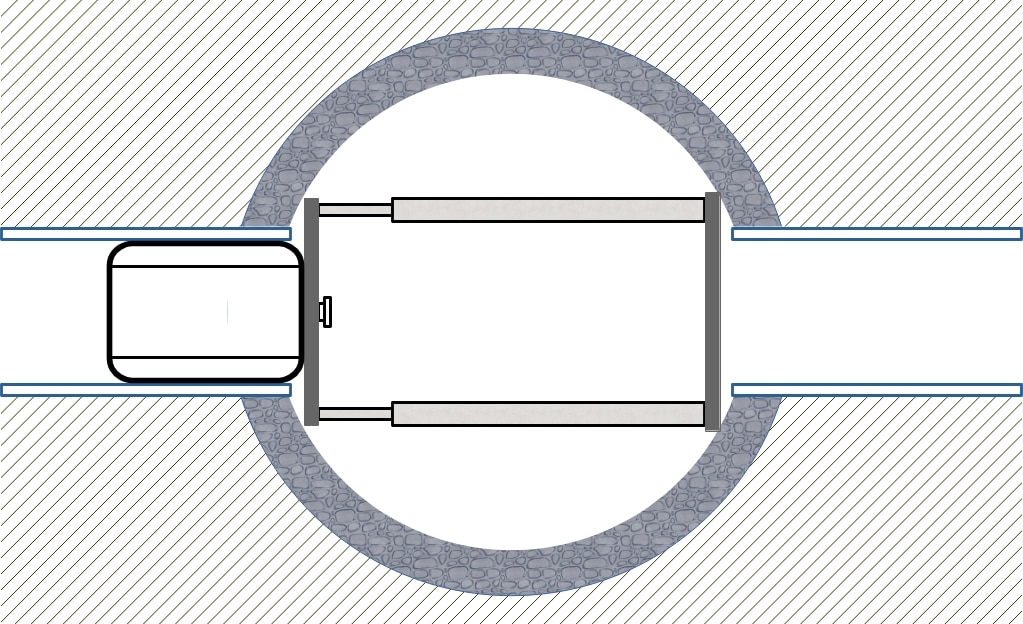

Flow pipe sealing cushion installed in manhole for cleaning a long, low-lying sewer
Flow pipe sealing cushion installed in manholes for cleaning a culvert in a gravity pipeline
Sewers and gravity pipes are often only designed for low pressure levels. Long pipe sections of several hundred meters in length cannot be cleaned with flushing vehicles, or only insufficiently. Video footage from an IKT research project in 2006 shows how even low compressed air pulses of around 1 bar can discharge gravel from transparent plastic pipes.
*Source: IKT (2006): Wastewater pressure pipes – possibilities and methods for cleaning. Institute for Underground Infrastructure (IKT), Gelsenkirchen.
Innovation
In the metalworking industry, pipelines also transport chips from the processing machines to the processing system together with the cooling lubricant emulsion. It is important that the pipe cross-section and thus the flow and pressure are maintained during operation. Residual chips can impair the hydraulics and even lead to blockages. Extensive studies at Hammann and in metalworking companies have shown that regular prophylactic Comprex cleaning can make a significant contribution to quality assurance. Even if the pipelines are only designed for low pressure levels, Comprex pulses can maintain the systems. Not only mobilized biofilms, but also chips and other coarse particles are reliably transported to the preparation for the cooling lubricant emulsion.



